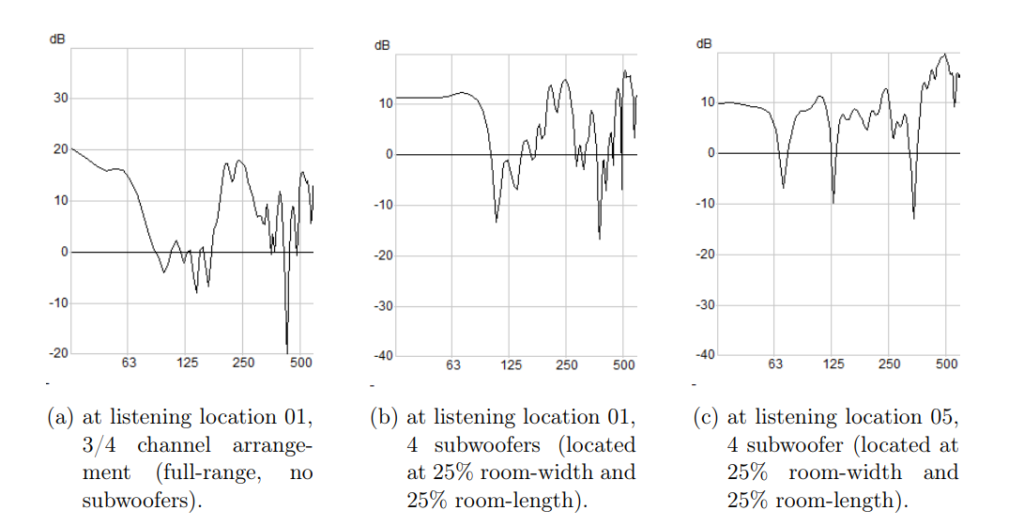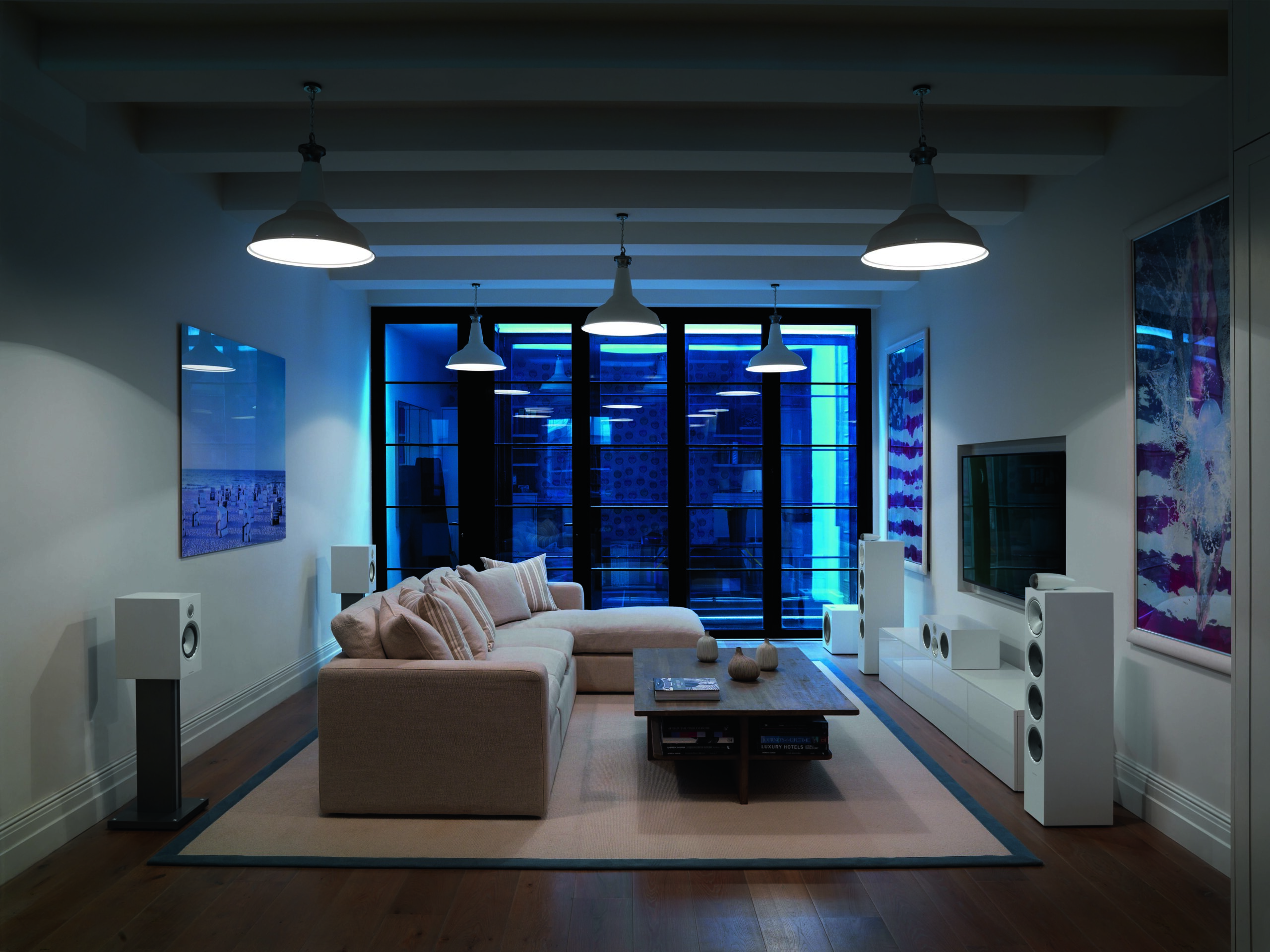Previously, in the first part of this series of posts, we discussed the best placement for a subwoofer by analyzing simulations and frequency responses. In this post, we continue this process and announce the final results.
Finally, Figure 1 shows the frequency responses for additional listening locations to compare seat-to-seat variations.

In (a) the frequency response at listening location 02 allows comparison with the frequency response in figure 2 (i) and confirms the fact that seat-to-seat variations are prominent for the 3/4 channel arrangement without subwoofers.
In (b) and (c) one can see the frequency response for the four subwoofer arrangements located at the 25% wall distances for listener 01 and listener 05, respectively. Further explanations are needed in order to understand these graphs regarding the seat-to-seat variations.
Although it is not obvious at first sight, seat-to-seat variations could have been minimized. The narrow dips in the frequency response can be explained by the listeners being located at the pressure minima of a room mode. The four subwoofer arrangements located at the 25% wall distances are only effective in room mode attenuation for the first three order with and length modes and thus failing to attenuate higher-order room modes as well as height modes. Keeping that in mind will help to understand the conclusions that are drawn as follows.
In (b), listener 01 is located at 4.5 m of the room width thus seated in a pressure null of the fourth order room mode corresponding to 98.4 Hz. The dip in at around 63 Hz in (b) may be explained by the ear height of listener 05 who is seated in the second row and located at 1.4 m above floor level and thus located 0.2 m higher than listeners in the front row.
Conclusion
The first order height room mode corresponds to 61.5 Hz and has its pressure minimum at 1.4 m and therefore interacting with the ear height of listener 05. Nevertheless, narrow dips in the frequency response will not be problematic for the perceived sound quality. Eventually, the overall sea-to-seat variations could have been minimized by using the four subwoofer arrangement located at the 25% wall distances.
In this post, we went to the second and last part of the best arrangement for the subwoofer using simulation results, supplementary and final results. Items needed to mention audio improvements and other parameters will be published in future posts. These items will pave the way for creating a home theater with the highest quality.
The audio products offered in Saba intelligent systems, which include professional speakers and amplifiers and inakustik cables with their great variety and high quality, make it possible to implement any type of equipment according to the relevant needs.



